Recent Posts
Recent Comments
No comments to show.
Posted by recomune_dhfskm in Awareness, blog on October 12th, 2024

Loneliness in seniors is far more dangerous than simple sadness it dramatically raises the risk of heart disease, stroke, dementia, and even premature death (JSTOR). This blog enlightens the cutting-edge science, overlooked warning signs, and practical, evidence-based ways families and caregivers can protect their aging loved ones. Loneliness is dismissed as a harmless emotion something we think can be fixed with a quick call or a passing smile. But for older adults, chronic loneliness is a silent epidemic and a severe public-health crisis that quietly damages the body, erodes the mind, and shortens life expectancy.
Groundbreaking research proves that social disconnection doesn’t just weigh on the spirit; it rewires the brain, weakens the immune system, strains the heart and blood vessels, and accelerates cognitive decline. Experts now compare the health toll of loneliness to smoking 15 cigarettes a day or living with obesity (University of New Hampshire).
Nearly one in three middle-aged and older Americans report feeling lonely, a staggering figure that continues to rise as the U.S. population ages. Without timely intervention, millions more risk suffering not only emotionally but also physically.
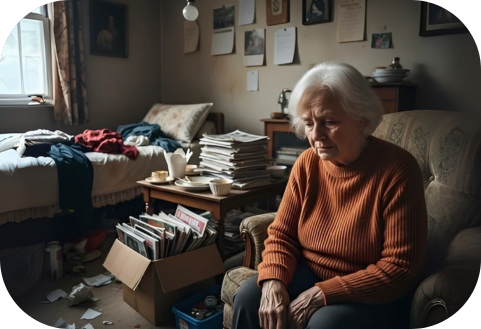
Loneliness is the subjective experience of social disconnection very different from simply living alone. This invisible burden sets off a cascade of biological stress responses cortisol (the stress hormone) surges, blood pressure climbs, inflammation intensifies, and immune defenses weaken. Over time, these shifts accelerate chronic illnesses, frailty, and neurodegenerative decline (National Institutes of Health)
Loneliness is not just emotional discomfort it is a neurological hazard. Prolonged stress elevates cortisol and inflammatory markers, which gradually damage neurons and shrink brain regions tied to memory, focus, and decision-making. Large pooled analyses, including NIA-funded research, confirm that lonely individuals have significantly higher odds of developing dementia even when depression and other factors are accounted for. This makes loneliness an independent risk factor for cognitive decline (National Institute on Aging).
Caregivers should watch for early brain signals:
Recognizing these early and voicing them to a healthcare provider can profoundly change outcomes. In brain health, early detection is transformative.
Loneliness exerts chronic strain on the cardiovascular system. Research links it to high blood pressure, more hospitalizations, poorer heart-failure outcomes, and elevated risk of heart attacks and strokes.
Meta-analyses show:
For seniors with existing heart conditions, loneliness predicts worse survival rates and more frequent emergency visits.
Why this matters: Heart disease and stroke remain the leading causes of death and disability in older adults. Tackling social disconnection is as critical as managing blood pressure or cholesterol.
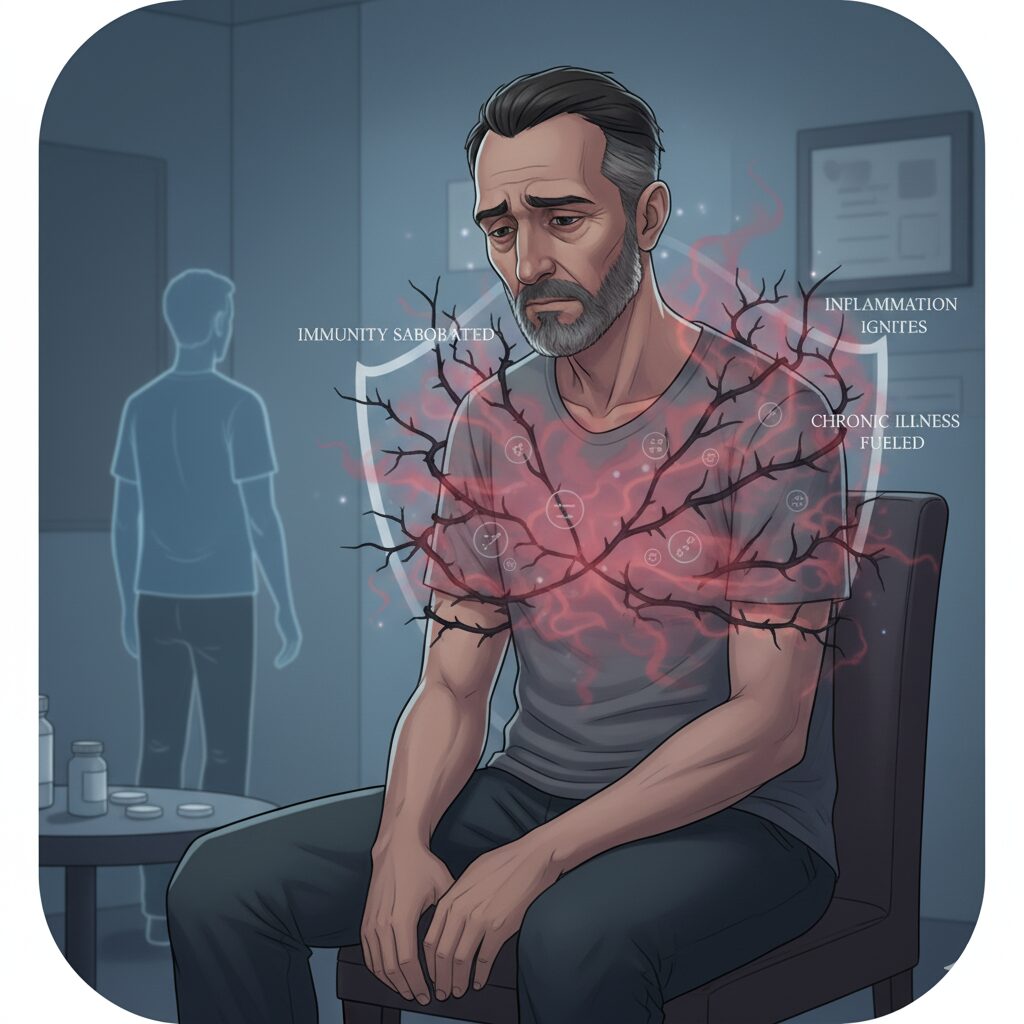
Chronic loneliness does more than hurt feelings it weakens immunity and amplifies systemic inflammation. Studies link it to:
Lonely older adults respond less effectively to vaccines and are more vulnerable to infections. Over time, this cascade magnifies chronic conditions and reduces life expectancy by 3–5 years.
Global data now recognize loneliness as a worldwide public health threat, linked to over 871,000 deaths annually, with effects comparable to heavy smoking (World Health Organization).
While loneliness can strike anyone, some groups of seniors are particularly vulnerable:
Socioeconomic disparities also play a role: seniors with lower incomes report much higher loneliness rates (AARP).

The good news: loneliness is reversible. Even small, consistent steps can improve health outcomes and restore joy. Research shows that meaningful connections lower stress hormones, improve immunity, and strengthen both brain and heart health.
Here are five high-impact strategies families and caregivers can adopt:
Loneliness isn’t solved by random check-ins — it thrives on intentional, heartfelt connections. Instead of quick calls, ask deeper questions: “What made you smile this week?” Studies show that quality matters more than quantity: even weekly 30-minute visits reduce perceived isolation.
For times when loved ones can’t always be present, ReComune AI Companionship bridges the gap offering seniors trusted, on-demand conversation, empathy, and emotional support that helps them feel connected between visits.
Technology can be a powerful lifeline — if it’s simple to use. Set up one-touch video calls, voice assistants, or large-button smartphones so seniors can connect without tech anxiety. Pair this with community-based support, such as local senior centers, faith groups, or volunteer visitors, which have been shown to lower depressive symptoms and social withdrawal in older adults (National Institute of Health).
Feeling needed is one of the strongest buffers against loneliness. Encourage seniors to volunteer, mentor, or even care for a pet. A study published in Aging & Mental Health found that older adults who engaged in purposeful activities reported higher life satisfaction and lower loneliness scores (Aging & Mental Health, 2019). Purpose restores identity, builds natural social contact, and protects mental health.
Often, it’s not unwillingness but practical barriers that keep older adults isolated. Untreated hearing or vision loss can drastically limit social participation, while lack of transportation cuts off access to community life. By addressing sensory health and arranging support such as rideshare services, community shuttles, or volunteer drivers, families can dramatically reopen the door to connection (CCAM-TAC).
Loneliness is not just emotional — it’s clinical. Ask healthcare providers to include loneliness screening during wellness visits, and request referrals to social prescribing programs or counseling services. Since depression and loneliness often overlap, addressing underlying mood disorders can reignite the desire for social contact and reduce health risks (CDC).
Small rituals also matter: sharing a meal, swapping photos, or co-reading a book can create daily micro-moments of belonging that strengthen connection.
Approach conversations with warmth and curiosity. Use “I” statements (“I miss our talks”), normalize the feeling (“Many people struggle with loneliness as they get older”), and offer specific help (“Would you like me to come by Tuesdays?”). Avoid framing loneliness as a character flaw it’s a social condition that needs practical solutions.
If loneliness is paired with persistent sadness, hopelessness, sleep or appetite changes, suicidal thoughts, or rapid cognitive decline, it’s important to contact a healthcare provider promptly. Clinicians can assess for depression, cognitive impairment, and safety risks and connect older adults to community services, mental health care, or social prescribing programs (National Institute on Aging).
Loneliness doesn’t have to be a lifelong affliction it is reversible, and emotional healing is possible at every stage of life. Compelling research demonstrates that cultivating resilient social connections, diminishing chronic isolation, and addressing co-occurring mental or physical conditions can drastically reduce cardiovascular risks, cognitive decline, and overall mortality while elevating vitality, longevity, and happiness. For families and caregivers, even seemingly modest gestures a heartfelt phone call, a consistent weekly visit, or providing reliable transportation function as transformative medicine for the heart, mind, and soul.
Posted by recomune_dhfskm in Awareness, blog on September 20th, 2024
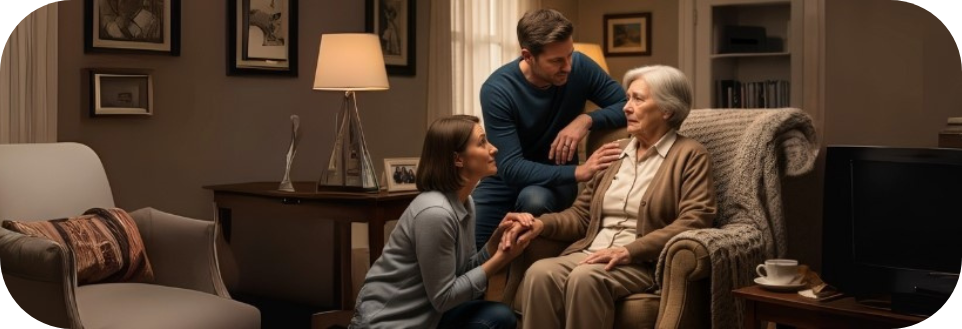
Loneliness among older adults often goes unnoticed, yet its emotional and physical effects can be profound. If you’ve sensed a growing distance, fewer chats, shorter responses, or general quietness, it could signal that your aging parent is feeling lonely. Starting the conversation requires courage, empathy, and respect.
A compassionate chat can offer reassurance, connection, and emotional support. This guide gives you thoughtful, research backed advice to help you initiate and guide such a conversation with care, clarity and with a deeper understanding of its importance.
Loneliness isn’t just an emotional concern — it represents a serious public health issue that can silently erode both mental and physical well-being. While many see loneliness as a passing feeling, research shows it can have profound long-term effects on our bodies, comparable to other well-known health risks like smoking and obesity. It doesn’t just affect mood — it can alter brain function, weaken the immune system, and even shorten lifespan.
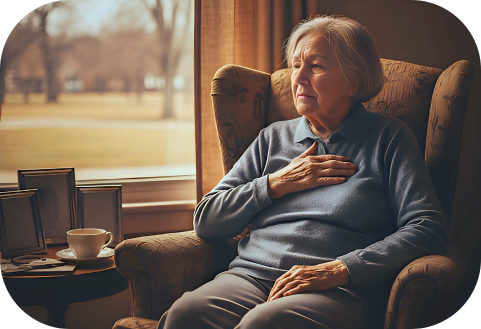
Here are some alarming findings from recent studies:
Aim for warmth not formality. A walk in the park, a quiet corner of home, or a shared cup of tea creates an ideal atmosphere for conversation, Comfort and privacy matter.
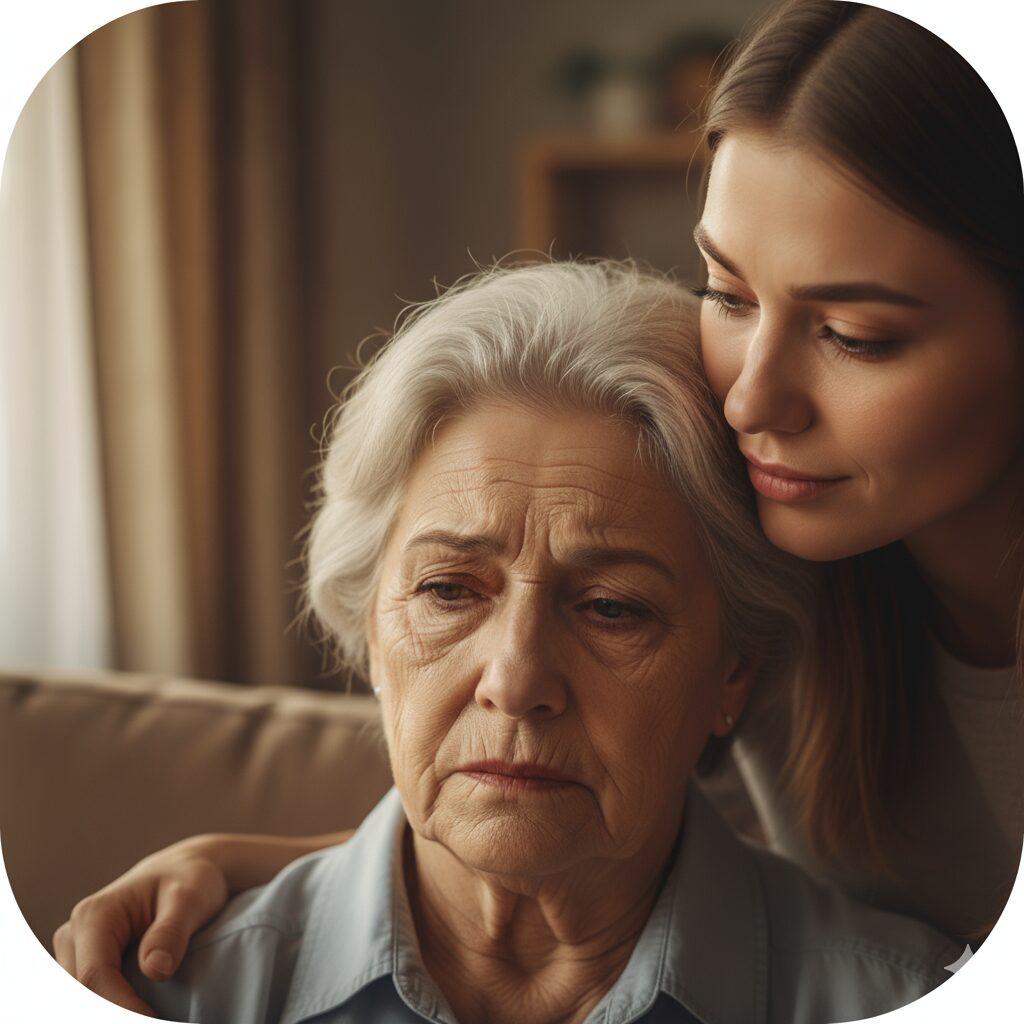
Begin by reinforcing the relationship, not pointing something out:
Considerate timing and phrasing make a difference
“I” statements focus on your own feelings rather than placing blame, which fosters trust and empathy.
Instead of yes/no prompts, try:
Open-ended questions allow seniors to reflect and express emotions more freely.
After asking, truly listen. Offer affirmations like, “I understand,” or “That sounds hard.” Let pauses be part of the conversation; it shows patience, not pressure. As connection builds in the conversation, you may come to bring up loneliness softly:
This kind of acknowledgment doesn’t label you. You illuminate feelings that might be hard to say but even harder to deny.
If your parent shares their feelings you should validate their experience with words like:
Show that you hear and accept their emotional reality. Validation reduces shame and builds emotional closeness.
Resist Rushing to “Fix”, Instead of shifting to action, invite dialogue:
This keeps the focus on their perspective and empowers them to guide the next steps (Harvard Health Publishing, 2020).
For example, storytelling clubs such as the Life Story Club in New York City report that 95% of participants feel an improvement in mood and social support (Life Story Club, 2022). Presenting such options shows what’s available while leaving choice and control with them which strengthens their sense of independence.
Here’s a clear breakdown of the stakes framed in a way that helps you and your parent view the conversation as proactive, not alarmist:
| Health Issue | Impact Related to Loneliness or Isolation | References |
| Dementia | ~50% higher risk | Johns Hopkins University |
| Heart Disease | 30% increased risk | ScienceDaily |
| Stroke | 32% increased risk; up to 56% if loneliness is chronic | The Guardian |
| Premature Death | Risk increases similar to smoking or obesity | JSTOR |
| Mental Health | Associated with higher rates of depression, anxiety, suicidal ideation, hospitalization | IntechOpen |
Understanding these risks frames the conversation as part of health care not scolding, but compassionate intervention.

Taking action doesn’t mean solving everything at once, it means showing up with consistency, care, and small gestures that rebuild connection. Whether it’s making time for regular check-ins, helping your parents explore social activities, or just sitting together in quiet companionship, these steps matter. Supporting your loved one through loneliness requires patience and presence. Even simple efforts can go a long way in restoring purpose, comfort, and emotional well-being. Create gentle routines: Weekly check-ins via call, message, or letter are simple and consistent.
These gestures fuel emotional safety, choice, and activity without overstepping.
Honest stories from communities often reveal what really resonates:
These reflections remind us that authenticity, memory, and connection often mean far more than grand gestures.
These findings make it clear that loneliness is far more than an emotional struggle — it is a powerful and often hidden risk factor for serious health conditions. From cognitive decline and heart disease to premature death, the toll of social isolation can be as dangerous as smoking or obesity. Recognizing loneliness as a public health issue is the first step toward addressing it.
Alongside building stronger human connections, innovative solutions like AI companions are emerging to offer emotional support, meaningful conversation, and daily engagement for those who feel isolated — especially older adults. By combining technology with community care, we can create a safety net that not only protects mental well-being but also improves the long-term physical health of our most vulnerable populations.
Posted by recomune_dhfskm in Awareness, Infographic on September 15th, 2024
Loneliness isn’t just a feeling—it’s a critical public health issue with severe consequences. This infographic explores the profound impact of social isolation on our physical and mental well-being.
The health risk of prolonged loneliness is comparable to well-known dangers.
15
Cigarettes a Day
Studies have equated the mortality risk of chronic loneliness to smoking 15 cigarettes daily, making it a more significant threat than obesity.
When we feel lonely, our bodies experience stress that can lead to a higher risk of developing serious, chronic conditions.
50%
Increased Risk
32%
Increased Risk
29%
Increased Risk
45%
Increased Risk
38%
Increased Risk
35%
Increased Risk
This visual highlights the percentage increase in risk for major health issues among individuals reporting high levels of loneliness compared to those who do not.
Loneliness is a significant contributor to mental health challenges, creating a cycle that can be difficult to break.
The stress of isolation weakens the body’s defenses and contributes to long-term physical damage.
Social isolation often disrupts healthy routines and behaviors, further compounding health risks.
A significant portion of the global adult population experiences loneliness, making it a widespread issue.
Approximately 1 in 4 adults report feeling lonely, highlighting the pervasive nature of this challenge across societies.
While loneliness can affect anyone, certain age groups report higher levels of frequent social isolation.
Younger adults and the very elderly are often the most vulnerable, though loneliness remains a significant issue throughout the lifespan.
Breaking the cycle of loneliness is a journey. Taking small, intentional steps can rebuild social connections and improve overall health.
Recognize the feeling and reach out to one person you trust—a friend, family member, or colleague.
Join a class, club, or group centered around an interest. Shared activities are a natural way to connect.
Helping others can provide a strong sense of purpose and community, reducing feelings of isolation.
You are not alone in feeling lonely.If you are struggling, consider reaching out to a mental health professional, a support hotline or ReComune. Connection is possible.(Source: CDC / Surgeon General Report, 2023, National Institute on Aging, WHO, 2022)
Posted by recomune_dhfskm in Awareness, blog on September 10th, 2024

Loneliness is often dismissed as a fleeting emotion—something temporary that fades with time. Yet for millions of seniors across North America, it is far more than just a passing feeling. Loneliness has become a silent epidemic, one that threatens not only emotional well-being but also physical health.
As families grow busy, children move away, and social circles shrink with age, many older adults find themselves living in quiet isolation. This crisis doesn’t capture headlines like other public health issues, but its impact is undeniable. Despite society’s image of aging as a season of wisdom, freedom, and rest, the reality for countless seniors is very different: days marked by disconnection, invisibility, and loss of purpose.
Unlike other health challenges, loneliness isn’t easy to spot. It doesn’t leave scars or physical marks, yet its effects run deep—undermining both body and mind. This is the hidden reality experts now recognize as senior loneliness: a silent but growing epidemic in North America.
In this blog, we’ll explore the scale of the problem, uncover its root causes, examine its impact on senior health, and highlight how families, communities, and technology can work together to create meaningful solutions.
Senior loneliness is far more widespread than many realize. In the United States, the National Academies of Sciences, Engineering, and Medicine report that almost one in four adults over 65 lives in social isolation. The situation in Canada is no less concerning, where nearly 30% of seniors admit to feeling lonely at least once each week. With the senior population growing rapidly, the challenge is only expected to intensify—by 2030, more than one in five North Americans will be over the age of 65.
What makes these numbers especially troubling is that loneliness isn’t simply a matter of emotions; it carries severe health risks. Studies reveal that persistent loneliness can raise the likelihood of premature death by 26%, a risk comparable to obesity or smoking 15 cigarettes a day.
Loneliness in older adults rarely stems from a single source. Instead, it often arises from a mix of life changes and circumstances that gradually build over time.

Loneliness isn’t just an emotional struggle—it’s a serious health hazard. Leading organizations warn that its impact on seniors rivals some of the deadliest chronic conditions.
Cognitive Decline
Lonely seniors are 50% more likely to develop dementia, according to the National Institute on Aging (NIA).
Heart and Stroke Risks
American Heart Association reports that isolation increases the risk of heart disease by 29% and stroke by 32%.
Mental Health Strain
The Social Isolation and Loneliness in Older Adults National Institutes of Aging highlights that prolonged loneliness is strongly tied to depression, anxiety, and higher suicide rates in older adults.
Weakened Immunity
Research from Harvard Health shows that chronic loneliness can alter immune system function, leaving seniors more vulnerable to infections and slower recovery.
Premature Death
A landmark study published in Perspectives on Psychological Science found that social isolation raises the risk of early death by 26%—a danger level comparable to smoking 15 cigarettes daily (Holt-Lunstad et al., 2015). National Institutes of Health (NIH) has since recognized loneliness as a pressing global health concern.
Loneliness isn’t harmless. It silently eats away at both body and mind, shortening lives and eroding well-being.
Loneliness doesn’t always announce itself loudly—it often shows up in subtle ways that can be easy to overlook. Paying attention to these warning signs can make a big difference in supporting your loved ones:
Social Withdrawal: Pulling away from family, friends, or community gatherings they once enjoyed.
Loss of Interest: No longer finding joy in hobbies, activities, or routines that used to bring them happiness.
Changes in Daily Habits: Shifts in appetite, disrupted sleep patterns, or lack of energy.
Emotional Distress: Frequent expressions of sadness, anxiety, or hopelessness.
Cognitive and Self-Care Decline: Increasing forgetfulness, neglecting personal care, or seeming less motivated overall.
Family support is often the strongest shield against senior loneliness. Even small, thoughtful gestures can go a long way in making older adults feel loved, connected, and valued. Here are some meaningful ways families can help:

When designed with simplicity and accessibility in mind, technology can be a lifeline for seniors facing isolation. It has the power to close physical distances, spark conversations, and rebuild a sense of community.
Video Calling Platforms
Apps like Zoom, FaceTime, or WhatsApp make it easier for families to share moments, celebrate milestones, and stay emotionally close—even when miles apart.
Online Learning & Virtual Communities
From book clubs and language classes to hobby-based groups, online platforms give seniors the chance to learn, engage, and connect with others who share their interests.
AI Companions & Smart Assistants
Voice-enabled devices can offer friendly reminders, simple entertainment, and even companionship through interactive conversations.
ReComune: A Powerful Solution for Senior Connection
Among these tools, ReComune stands out as a platform built specifically for seniors. Unlike generic social networks, ReComune is designed to be intuitive, safe, and welcoming. Seniors can:
By embracing solutions like ReComune, families can help their loved ones bridge both physical and emotional distances transforming loneliness into connection, and isolation into community.
Senior loneliness in North America does not have to be the norm. With greater awareness, genuine compassion, and collective action, we can reshape aging into a stage of life defined by connection, purpose, and belonging not isolation.
Families must place emotional connection at the heart of caregiving. Communities need to create welcoming spaces where older adults feel seen, heard, and valued. And technology must continue evolving as a bridge making it easier for seniors to stay close to loved ones and participate fully in society.
Most importantly, seniors themselves deserve to feel empowered, not forgotten. Their stories, wisdom, and presence matter. By working together families, communities, innovators, and seniors we can build a future where no one grows old feeling alone, but instead grows old surrounded by care, dignity, and connection.

Loneliness is far more than a fleeting feeling it is a silent epidemic stealing health, joy, and dignity from millions of seniors. But it doesn’t have to be this way. With compassion and commitment, we can turn isolation into connection and despair into hope.
By opening conversations that matter, strengthening community bonds, and empowering seniors with accessible technology like ReComune, we can ensure that every older adult feels seen, valued, and never left behind.
This is not just about fighting loneliness it’s about honoring the lives and legacies of our aging loved ones. Together, we can break the silence, restore connection, and build a culture where growing old means living fully with dignity, purpose, and care.